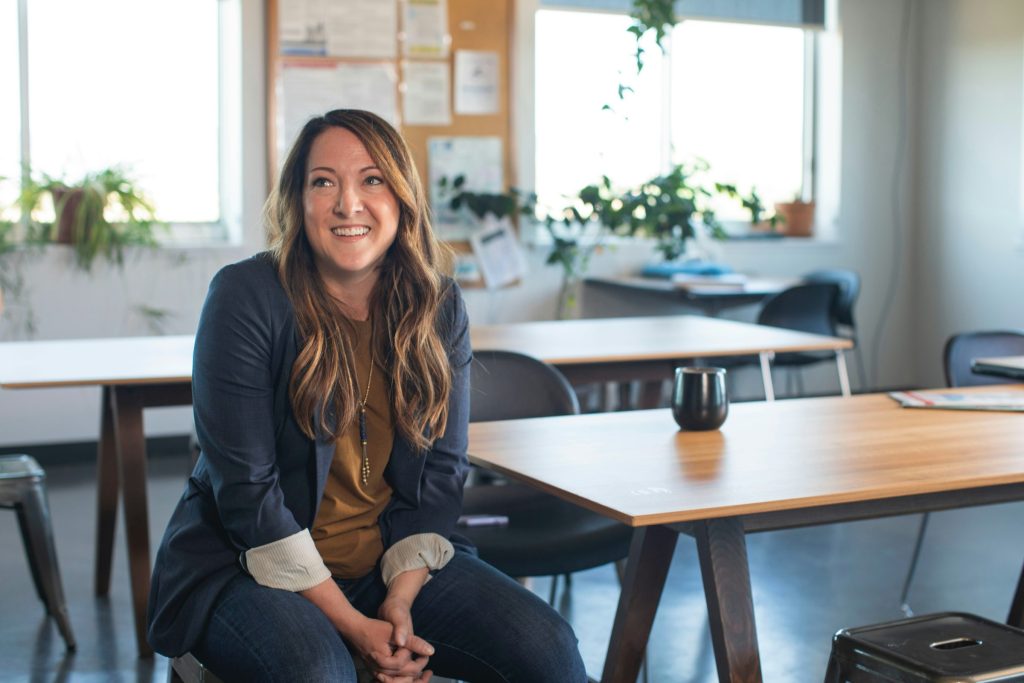Ever since the pandemic, the traditional work environment has been turned on its head. Working remotely became the norm and work became an extension of employees’ lifestyle. When the world started opening back up again, employees didn’t want to lose the lifestyle they had developed during the pandemic just to go back to working in the office. This led to the Great Resignation phenomenon as employees began evaluating what was truly important in their lives.
Working remotely gave employees a freedom and flexibility they did not want to sacrifice for returning to the traditional work environment. With a growing trend emerging of individuals choosing to work remotely, we reached out to Tamara Sanderson to discuss her work and travel experiences, designing a remote work culture, and the future of remote work.
 Tamara is the co-founder of Remote Works, an organizational design and consulting firm and co-author of Remote Works: A Manager’s Playbook for Designing Great Remote Work Experiences.
Tamara is the co-founder of Remote Works, an organizational design and consulting firm and co-author of Remote Works: A Manager’s Playbook for Designing Great Remote Work Experiences.
Before founding Remote Works, Tamara cut her teeth in design at IDEO, in tech at Google and Automattic (WordPress.com), and in finance and operations at Oliver Wyman and Audac group.
Through her vast work experiences traveling around the world with 70 countries and 7 continents under her belt, Tamara has learned the secrets to making remote work WORK. She believes in personal autonomy and has a passion for helping others find their own paths.
Tell us a little bit about yourself. What is one experience that has shaped you into who you are today?
A college-study-abroad flyer and subsequent internet searches lured me to London nearly two decades ago. It was intended to be a four-month adventure, but sometimes life has different plans. That experience transformed me from someone who thought she’d never leave Texas to a traveler. I’ve spent nine years as an ex-pat (four of which were in Singapore), visited 70 countries, and even sailed to Antarctica.
I was a remote worker before I knew it had a name. I began a career as a management consultant at Oliver Wyman (where I took an international project that came my way) and as a private equity analyst at Audax Group. Later, I cut my teeth on tech and design at Google, Automattic (WordPress.com), and IDEO.
While I’ve put up my suitcase for now, I’ve found new passionate projects: building a library in my 700-square-foot-apartment, tending to a balcony garden, learning how to cook, making art, and getting involved in my local community in Cambridge, Massachusetts.
Call me an idealist, but I truly believe that remote work can change the opportunity equation for people when they are able to fully embrace one another’s autonomy, dignity, and ingenuity.
You have worked for organizations including Google and Automattic. How was your personal transition from the corporate world to remote work?
I often joke that I was a remote worker before I knew it had a name. After spending my first year as a management consultant flying back and forth to Dallas in 2006, I decided there must be a better way. I ended my lease on my uptown apartment, which I was rarely at, and started living in hotels near my consulting projects (and with friends and family when back in the United States). My “home” was the Sheraton hotel in El Salvador and the Four Points in Zurich; I bopped between London and Dublin (cue the movie Up in The Air, except there was no George Cloony in my case), exploring bits of Europe and North Africa in-between.
I didn’t realize I was working remotely, even though I only flew back to my “home office” once a quarter. All I needed was her blackberry and laptop computer.
I carried that remote working mindset to my subsequent jobs. Although Google is known for its office culture (and those free meals), we were already practicing many remote working skills since Google has offices worldwide. We collaborated using G-Suite docs and spreadsheets and used a GVC system for video calls.
At Automattic, though, I learned what it was like to work for a company built to be remote from the ground up! It was hyper-focused on asynchronous written communication, which made it a breeze to work across time zones.
What is your advice for organizations in establishing a remote work culture?
Start with the first principles! Remote work is more than signing up for a Zoom account or rolling out Slack. We recommend using the 5W and 1H journalistic framework as a starting point in our book. Ask Who, What, When, Where, Why, and How questions to nail what needs to change to work well remotely.
In an earlier interview, you spoke about the great resignation and how previously it was about life and work. Now it is about work and life. How should organizations design their work environment to enable this in a meaningful way?
Use asynchronous communication! That sounds simple, but by moving more of your communication from “now” to “later” communication, you enable people to work on their own schedules. You can start by opening up your calendar and conducting a meeting audit. Review all the meetings you and your team have on the calendar for the past two weeks (a month if you’d like an accurate snapshot). For each meeting, note whether it was needed and how you could change the cadence, length, or attendees to reduce the meeting burden. If a meeting can be an email, let it be an email!
What are the top recruitment tools would you recommend employers use to facilitate remote hiring?
From what I’ve heard, Interviewer.AI is a great tool, though, my expertise lies more in design and organizational behavior. When recruiting for remote work, try to test skills that employees will need to accomplish their job. For example, how is there written conversation? How will they be able to manage the tools you use in-house to perform their job? How are their time management skills (usually remote work requires more autonomy)?
For example, Automattic requires a paid trial as a part of the recruitment process to simulate how it would be to work at Automattic full-time. For instance, I was required to develop a partnership plan and revenue model using available data internally and had to ask questions to team members. That process was helpful for both sides—I knew what I was signing up for, and my potential team knew I had the skills to work remotely. More on trials here: https://automattic.com/what-to-expect-during-a-trial/
There is a lot of debate around compensation for remote vs on-premise workforce. How should businesses think about compensating employees to keep them motivated?
Are you paying people for their work or where they live? Are the job responsibilities different remotely vs. on-premise? The answer to those questions should inform your compensation strategy.
What do you think job seekers, specifically young professionals entering the workforce, should look for in a remote work environment?
Great question! As a young professional, you’re still learning your craft—whether that’s customer service, coding, or launching marketing campaigns. Therefore, I recommend looking for a remote work environment where you can shadow someone with more experience. Also, look for organizations where remote work is prioritized; otherwise, you might suffer from in-group vs. out-group dynamics.
Remote work has changed considerably in the past year from what we experienced during the pandemic. How do you think remote work will continue to evolve going forward?
Remote work during a pandemic is different from intentionally-design remote work. Workers were slingshotted into this foreign way of working with little preparation and a lot of panic. Kids were out of school. Friends and family members were in hospitals. Everyone was working from makeshift home office set-ups with internet connections that couldn’t handle the bandwidth. Plus, every aspect of life—from work to social to entertainment—was on a 13-inch computer screen.
Going forward, I hope to see people continue experimenting with the freedom and flexibility that remote work allows, experimenting with when and how people do their best work. We’re at the beginning stages of this global shift, and I’m excited to see it evolve as people question the 9-to-5 and how work is done.
Your book, Remote Works: A Manager’s Playbook for Designing Great Remote Work Experiences, is being released early in the new year. What is one piece of advice you have gained from your travel experiences and give in your book on making remote work work?
Most of the discourse on remote work focuses on using tools and debates around hybrid vs. remote but leaves the critical component to make remote work actually work: a remote state of mind. We’ve had the means to work remotely for decades, but it took a pandemic to bring it to the forefront. Why? Behavior change requires challenging the status quo. It’s asking questions like why and imagining how work could be better.
Do you have any last comments or thoughts about work-life balance and remote work?
It’s a journey. There is always room for improving your remote work acumen. I’m a better remote worker today than I was last year.
Look out for Tamara’s book, Remote Works: A Manager’s Playbook for Designing Great Remote Work Experiences, releasing February 7th 2023 and available internationally through Penguin Randomhouse.
Interviewer.AI is a technology platform purposely built to support Recruiters and HR teams in finding top talent for their companies. Interviewer.AI is a state-of-the-art video recruiting software that uses AI (Artificial Intelligence) to screen in advance and shortlist the candidates that meet the criteria set. HR teams use the software to make the recruitment process more efficient and shorten the hiring cycle. Learn more about how Interviewer.AI can help your business.
Increase your hiring team’s efficiency using a combination of resume scoring, skill assessment, and asynchronous video interviews.





